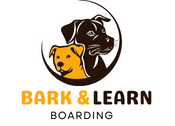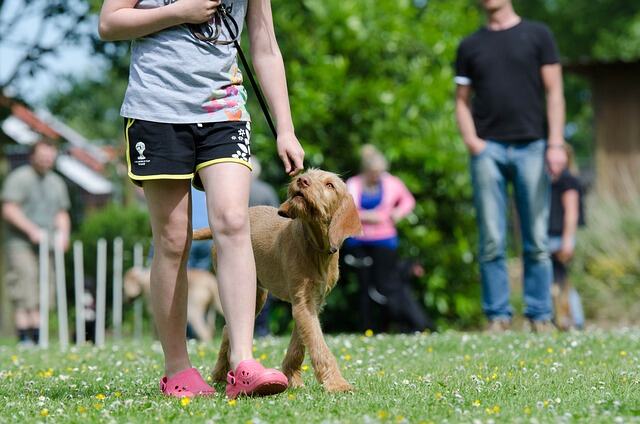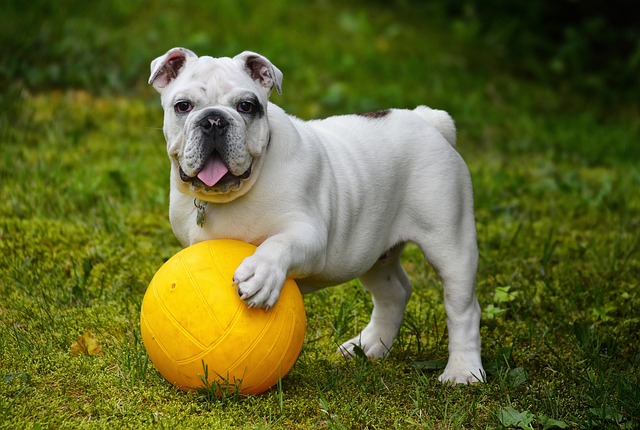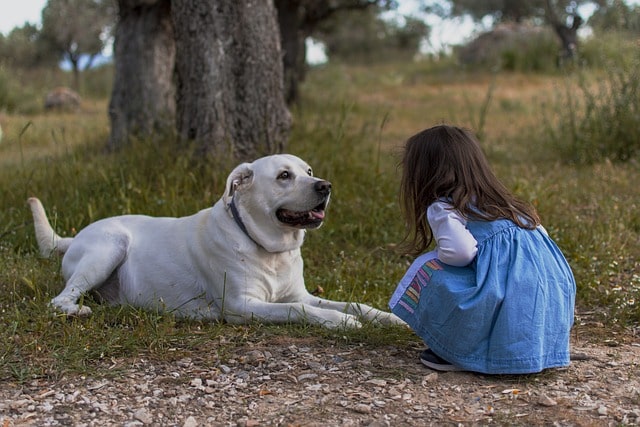Are you tired of training your dog and feeling overwhelmed? Or do you want some board and train dogs guidance?
Imagine a fun place where your pet dog learns to listen to you and behave nicely. That’s what “board and train dogs” programs do! But it’s not a typical boarding school or pet hostel.
Training a dog can be challenging yet rewarding whether you’re a first-time dog owner or have years of experience. You can understand the importance of having a well-behaved canine companion.
However, finding the time and expertise to train your furry friend can be difficult. Training programs offer a comprehensive solution for teaching dogs more effectively and even more efficiently.
In this article, we’ll dive into the world of board and train dogs. Exploring what these programs are, their benefits, and how they can transform the lives of dogs and their owners.
So let’s start without delay…
What is Board and train for dogs?
Board and train dog programs, also known as “boot camps” for dogs, provide a captivating training experience where dogs stay at a training facility. Or with a professional trainer for a set period.
Depending on the goals and requirements, these programs typically last a few weeks to several months.
Types of Board and Train:
Different board and train dog programs cater to various needs and training goals. Here are some of the most common types:
-
Basic Obedience Board and Train:
These programs generally focus on teaching basic commands. Such as sit, stay, come, heel, and down. They are suitable for puppies, particularly dogs with minimal training.
-
Advanced Obedience Board and Train:
Experts design these programs for dogs that have already mastered basic commands.
In most cases, dogs are trained but need further training in advanced obedience skills such as off-leash obedience, distance commands, and precision work.
-
Behavior Modification Board and Train:
These programs address behavioral issues such as aggression, fearfulness, separation anxiety, leash reactivity, or excessive barking. Trainers work on modifying the dog’s overall behavior through structured training and exercises.
-
Service Dog Training Board and Train:
These programs train dogs to perform specific tasks to assist individuals with disabilities. Tasks may include:
- Guiding the visually impaired
- Alerting to capture
- Recovery items
- Providing support for the movement
-
Therapy Dog Training Board and Train:
These programs prepare dogs to work as therapy animals in various settings, such as hospitals, schools, nursing homes, and rehabilitation centers.
Dogs undergo training to develop calm and gentle temperaments. Most likely, they learn how to interact appropriately with different people.
-
Sport or Competition Training Board and Train:
These programs are specifically for dogs and handlers interested in dog sports, such as agility, obedience trials, rally obedience, flyball, or competitive obedience.
Training focuses on developing skills specific to the chosen sport and preparing for competition.
-
Puppy Board and Train:
These programs aim to establish a foundation of good behavior, socialization, and basic obedience skills for young puppies.
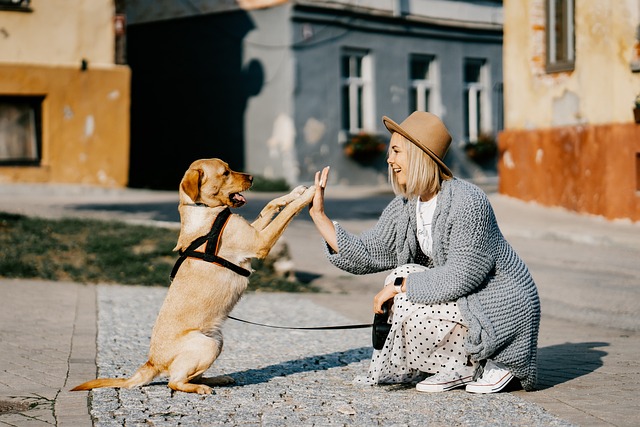
Training typically includes crate training, housebreaking, basic commands, and socialization with other dogs and people.
-
Customized Board and Train:
Some facilities offer personalized programs to meet the dog’s and owner’s needs and goals. Trainers work closely with the owner to develop a training plan that addresses specific issues or goals.
There are two other types of board and train. Certainly! “Off-leash” and “on-leash” refer to the presence or absence of a leash during training sessions.
Board and train dog programs may focus on either or both types of training. Depending on the owner’s goals and the dog’s needs. Here’s a breakdown of each:
On-Leash Board and Train:
- In an on-leash board and train program, the dog wears a leash attached to their collar or harness.
- This training helps teach basic obedience commands and leash manners and address specific behavioral issues. While also maintaining physical control over the dog.
- On-leash training can improve leash walking skills. Teach commands like sit, stay, and heel. And also manage the dog’s behavior in public places.
Off-Leash Board and Train:
- Off-leash board and train programs focus on training the dog to respond reliably to commands without needing a leash.
- Dogs in off-leash training programs learn to respond to verbal cues and hand signals. And other forms of communication without relying on physical restraint.
- This training is for advanced obedience, agility training, competitive obedience, and activities such as hiking or playing in off-leash parks.
- Off-leash training requires high trust, consistency, and reliability in the dog’s command response. Making it essential for trainers to establish a strong foundation of obedience. Then, focus on communication before transitioning to off-leash work.
Consequently, some board and train programs may incorporate a combination of on-leash and off-leash training. They gradually transition from one to the other as the dog progresses in their training.
The decision to focus on on-leash or off-leash training depends on the dog’s temperament, behavior, training goals, and the owner’s preferences.

Regardless of whether the training is on-leash or off-leash, it’s crucial to prioritize safety and well-being. Trainers should use humane and effective training methods. It also provides guidance and support for the owner to maintain and reinforce the training at home.
The Process Unveiled
Experts carefully organize a dog’s journey in a board and train program to ensure maximum progress and development. Here’s a glimpse into the typical process involved:
1. Initial Assessment and Evaluation:
At first, before beginning the training program, each dog undergoes a comprehensive assessment. This assessment evaluates their temperament, behavior issues, and training needs.
This assessment helps the trainer develop a personalized training plan for the dog’s unique requirements.
2. Tailored Training Plans:
The trainer creates a customized curriculum based on the assessment results. This plan addresses specific behavior problems, obedience commands, and socialization goals on the whole.
This plan serves as a roadmap for the dog’s training journey, outlining the techniques, exercises, and milestones to achieve during their stay.
3. Immersive Training Environment:
During their time in the program, dogs are fully immersed in a structured training environment. Experienced trainers and fellow canine companions surround these programs.
This immersive setting lets dogs focus on learning. And they practice new skills in a controlled, supportive atmosphere.
4. Ongoing Support and Follow-Up:
Lastly, even after completing the program, dogs receive continued support and guidance as a final step from their trainers to ensure long-term success.
Trainers provide owners with valuable insights, tips, and follow-up sessions to reinforce the training principles. They also address any lingering issues that may arise.
Advantages of Board and Train Programs
Board and train dog programs offer many benefits for dogs and their owners. Let’s explore some of the advantages:
1. Intensive Training Focus:
One of the primary advantages of board and train programs is the intensive focus on training.
Dogs receive dedicated one-on-one attention from experienced trainers, allowing faster progress. It makes them deliver more effective results than traditional training methods.
2. Professional Guidance and Expertise:
Professional trainers possess the knowledge, skills, and experience to address various behavior issues and training challenges.
Entrust your dog to a reputable board and train program. You can access expert guidance and personalized instruction to your pet’s needs.
3. Socialization Opportunities:
Board and train programs provide valuable socialization opportunities for dogs. It allows them to interact with other dogs in a controlled environment.
This exposure helps dogs develop essential social skills, build confidence, and learn appropriate behavior around other animals.
4. Convenience for Busy Owners:
For busy pet owners juggling work, family, and other commitments, board and train programs offer a convenient solution.
Instead of trying to fit training sessions into an already hectic schedule, you can choose a pet school. Owners can entrust their dogs to a professional trainer and have peace of mind knowing their pets are receiving top-notch care and training.
5. Addressing Specific Behavioral Issues Effectively:
Whether it’s excessive barking, aggression, separation anxiety, or leash reactivity. Board and train programs are designed to address a wide range of behavior issues effectively.
Trainers utilize proven techniques and positive reinforcement methods to modify unwanted behaviors. And instill desirable ones, resulting in a well-behaved and obedient dog.
Debunking Common Misconceptions
Despite the many benefits of board and train programs, some misconceptions and concerns exist.
That may deter pet owners from considering this option. Let’s have a check…
1. Concerns about Separation Anxiety:
One common misconception is that dogs may experience separation anxiety or distress. When separated from their owners during a board and train program, they are trained emotionally.
However, reputable trainers ensure dogs feel safe and secure in their new environment. They minimize stress and anxiety through positive reinforcement, structured routines, and ample socialization opportunities.
2. Myths Surrounding Board and Train Methods:
Another misconception is that board and train programs rely on harsh or punitive training methods to achieve results. In reality, reputable trainers use science-based, positive reinforcement techniques.
These techniques reward desired behaviors but also punish unwanted ones. These methods prioritise the dog’s emotional well-being and specifically long-term happiness, fostering a positive training experience.
3. Clarifying the Role of Owners in the Training Process:
Some pet owners may mistakenly believe that board and train programs absolve them of any responsibility for their dog’s training. Instead, owners remain integral to the training process.
However, professional trainers are crucial in guiding and instructing dogs during their stay.
Trainers work closely with owners to transfer skills and reinforce training principles. They ensure consistency in the dog’s home environment post-program.
Choosing the Right Board and Train Program
Initially, when selecting a board and train program for your dog, it’s essential to consider several factors. To ensure the best possible experience and outcomes. Here are some tips for choosing the right program:
1. Reputation and Experience:
Research prospective trainers or facilities thoroughly and inquire about their credentials, experience, and track record in detail. Furthermore, Look for trainers with a proven success history and positive reviews from satisfied clients.
2. Training Methods and Philosophy:
Inquire about the training methods and techniques used by the trainer or facility.
Ensure they align with your preferences and values. And prioritize trainers who emphasize positive reinforcement, patience, and compassion in their approach.
3. Facility and Environment:
Visit the training facility in person to assess the environment’s cleanliness, safety, and suitability for your dog. Look for facilities that prioritize well-being and the comfort of their canine guests.
4. Communication and Transparency:
Choose a trainer or facility that values open communication and transparency throughout training.
Ensure they regularly update your dog’s progress. Welcome your input and feedback, and offer precise follow-up care and support post-program guidelines.
Do board and train programs work?
To illustrate the usefulness of board and train programs, let’s explore some success stories and testimonials from satisfied clients:
-
Case Study:
Meet Max
Meet Max, a high-energy Labrador retriever struggling with leash pulling and jumping on visitors.
After completing a six-week board and train program, Max emerged as a well-mannered companion. He walks politely on a leash and greets guests calmly.
-
Testimonial from Sarah:
Sarah with her dog
“I was at my wit’s end trying to manage my dog’s aggressive behavior towards other dogs. Thanks to the board and train program. My dog has made remarkable progress as compared to early behavior.
Meanwhile, he can now enjoy outings at the dog park without incident. I’m forever grateful for its positive impact on our lives.”
“Board and train dog” programs are like school for your dog. They help your dog learn good manners and cool tricks. In short, board and train programs offer a holistic approach to dog training.
Owners can unlock their pets’ full potential by enrolling them in these programs. Moreover, it strengthens the bond between human and canine companions.
Whether your dog is a young puppy or an older dog, there’s a program that’s just right.
Remember, a well-trained dog is happy and can be your best friend. So, why wait? Find the perfect “board and train” program for your dog and start the fun journey. Happy training!
FAQs
- How long does the “Board and Train” program last?
The duration of the program can vary depending on your dog’s specific needs. Typically, it can range from a few weeks to a few months. - What is a “Board and Train” program?
The “Board and Train” program is a dog training service where your dog stays with us for a specific period. Professional trainers work with your dog on various skills and behaviors during this time. - What kind of training will my dog receive?
Your dog will receive personalized training based on their needs. It can include obedience training, socialization, behavior modification, and specific skill training. - Will I receive updates on my dog’s progress?
Yes, we provide regular updates on your dog’s progress. We believe in maintaining open communication with our clients to ensure they are informed about their dog’s development. - Is the “Board and Train” program suitable for all dogs?
The “Board and Train” program can be beneficial for many dogs. However, the suitability can depend on the dog’s professionals. We recommend a consultation to determine if this program during this time is the right fit for your dog. - How do I ensure the safety and comfort of my dog during the program?
We prioritize the safety and comfort of all dogs in our care. Our facilities are safe, clean, and comfortable. Our professional staff is trained in animal care and behavior to ensure your dog has a positive experience. - What happens after the “Board and Train” program?
After the program, we offer follow-up sessions to ensure the training sticks. We also provide you with the necessary knowledge and tools to continue reinforcing the training at home.
